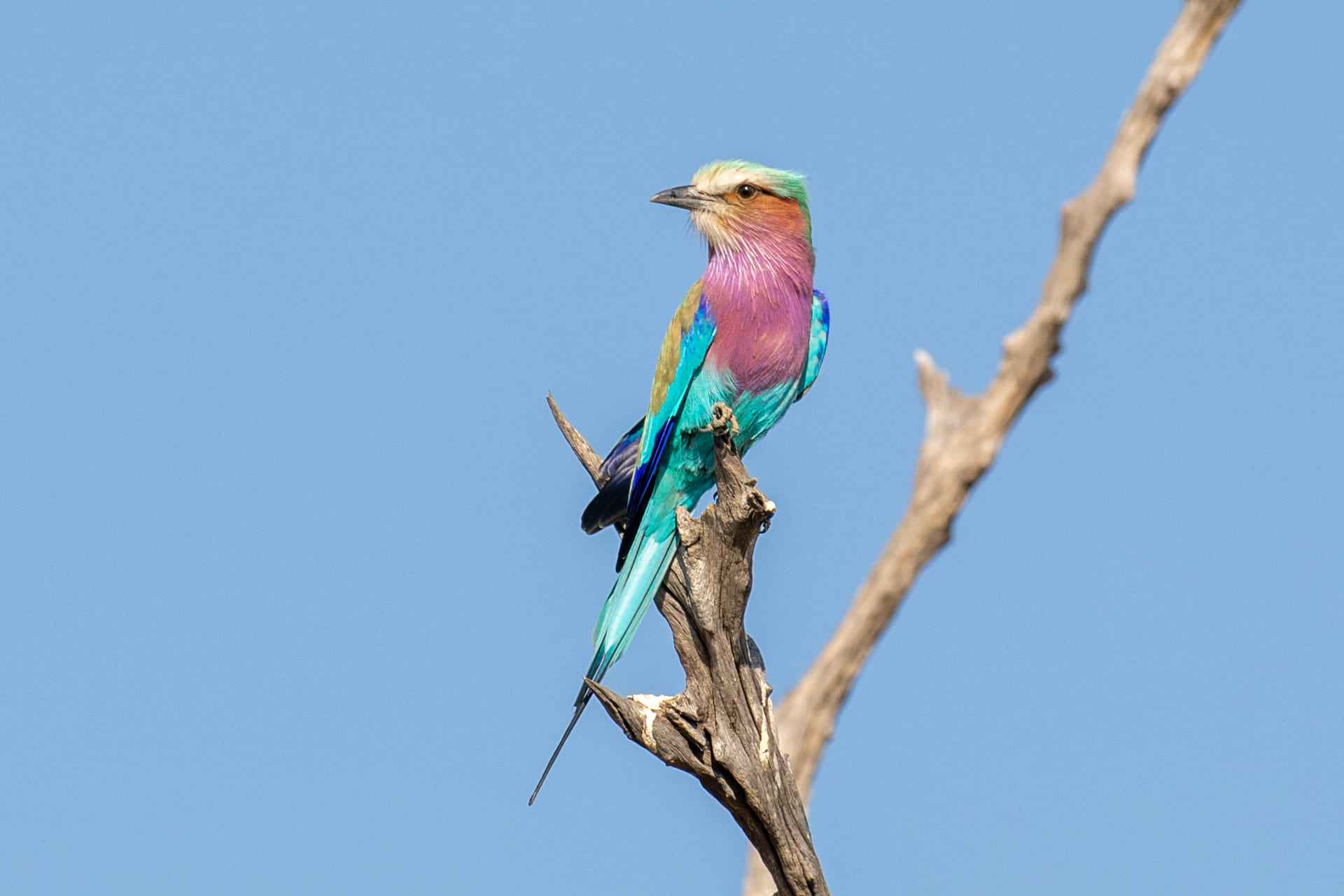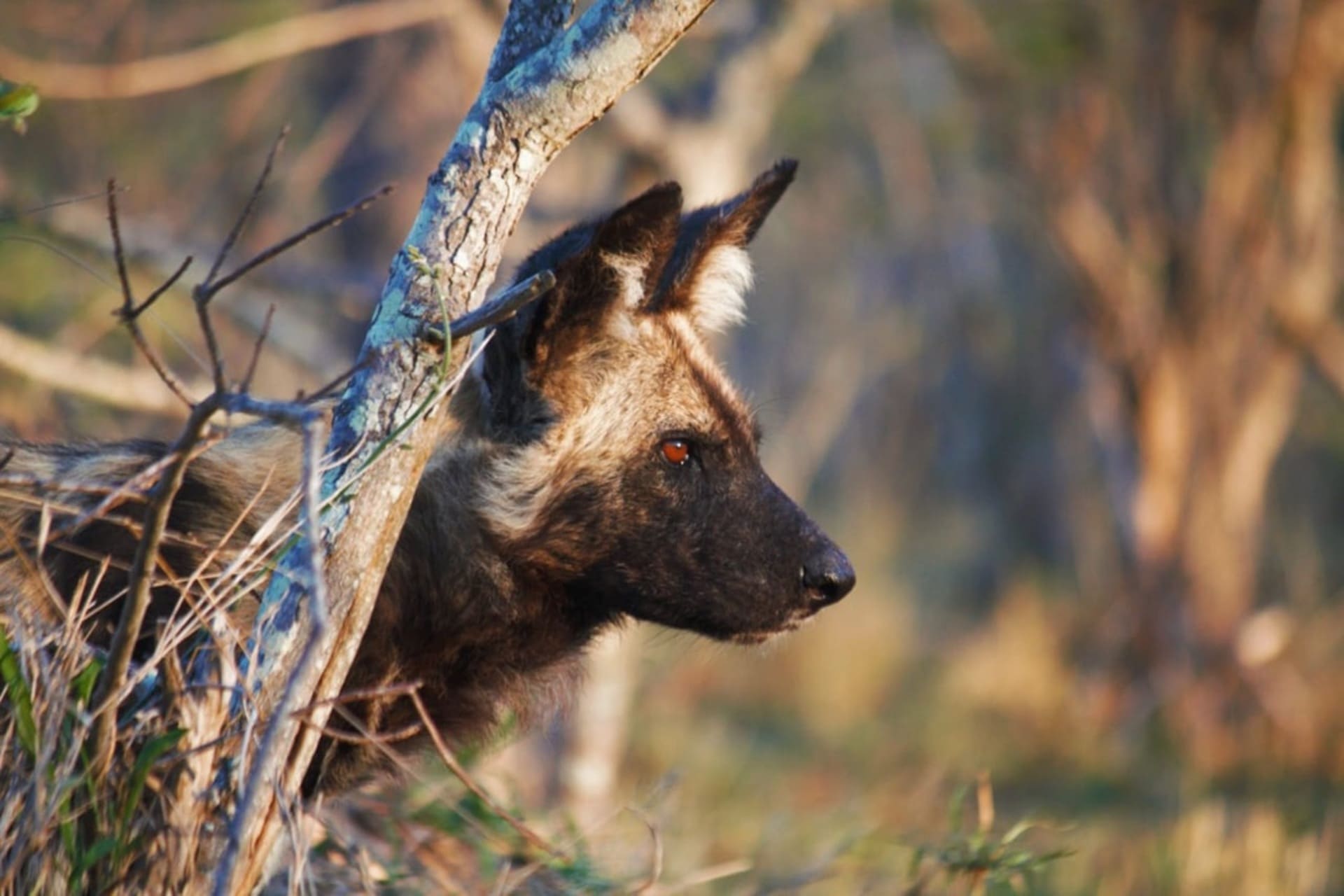
When planning a family safari, kids' activities are always a priority. Between the twice-daily game drives, what do lodges offer to make the safari holiday fun for kids? The bush is a kaleidoscope of sights, sounds, textures, and interesting facts that kids won’t experience in the traditional classroom. And with Chitwa Chitwa’s guides and trackers having grown up in the bush, sharing their knowledge is a natural extension of their passion.
Binoculars and Bird Calls
Sabi Sand is home to over 300 bird species. Among them are kingfishers, rollers, hornbills, owls, and eagles. Your little ones can learn fun facts about these various feathery friends. For example, did you know that woodland kingfishers don’t fish as one would assume by their name? Instead, they prefer feasting on insects on the ground.
Our guides are expert birders and teach kids how to identify birds, from the blue woodland kingfishers and pastel lilac-breasted rollers to the vivid violet-backed starling.

Even parents are excited to learn that Lion King’s Zazu is a yellow-billed hornbill and that there are many of them in Sabi Sand. They enjoy a diet of chameleons, frogs, bird chicks, and insects.
Different birds also make different calls for various reasons. You will hear that the morning bird song is different from distress calls. Some theories say that birds sing to find mates so they can breed, and males will also sing to proclaim their authority.
Tiny Toes and Giant Paws
When tracking animals, our guides show kids what to look for: the back pad of the spoor and the claws. Lions and leopards have three lobes on the back pad, whereas hyenas have two. And these claws help us distinguish between leopards, cheetahs, African wild dogs, and hyenas.

Kids will also learn that size matters! For instance, lion tracks are larger than leopard tracks because they physically weigh more.
Learning to track wildlife is an immersive experience and a memorable day spent in the bush with an expert.
The Bark Side
There are a few iconic trees in the Sabi Sand, including leadwood, jackalberry, apple-leaf, tamboti, and marula tree.
The leadwood tree got its name from the density and weight of its timber. Interestingly, when dropped into water, this wood sinks and does not float like one would expect. The density also keeps it safe from wood-boring insects. When used as firewood, it takes a long time to burn out, and its ash can even be used as toothpaste! Kids will love that last one.
Young tamboti trees have grey branches and darken as the tree ages. It’s a popular food source for impala, elephants and monkeys.

The bark on a knobthorn tree forms thorny knobs on the bark of young trees, hence the name. It’s a tree loved by many animals – elephants feast on the leaves, roots, and inner bark, while monkeys and baboons prefer the flowers.
Stars in Their Eyes
The beauty of the night sky is striking in the Sabi Sand due to the low levels of light pollution. Kids are especially fascinated by the vivid Milky Way! Regardless of the season, the Southern Hemisphere constellations offer hours of entertainment for young and old.
Kids will learn how to identify the Southern Cross and how to use it correctly for navigation.
From Story Time to Bush Time
There’s something magical about the Sabi Sand. It’s challenging to put it into words. It will unlock such wonder in your children’s minds and souls.
It’s better than any storybook – because this is one adventure they get to live for real. It’s rewarding, not just for adults, but especially for kids. Days are filled with exploration and frequent “whoa” exclamations! Let's plan your next luxury family safari today.